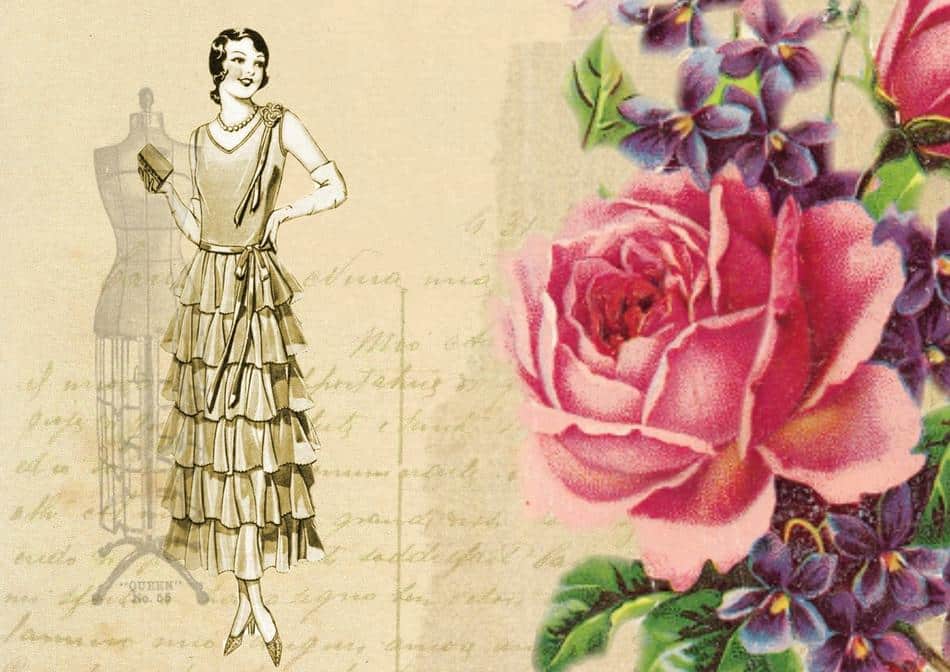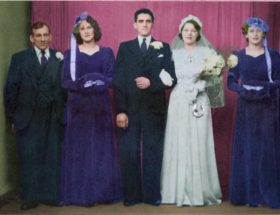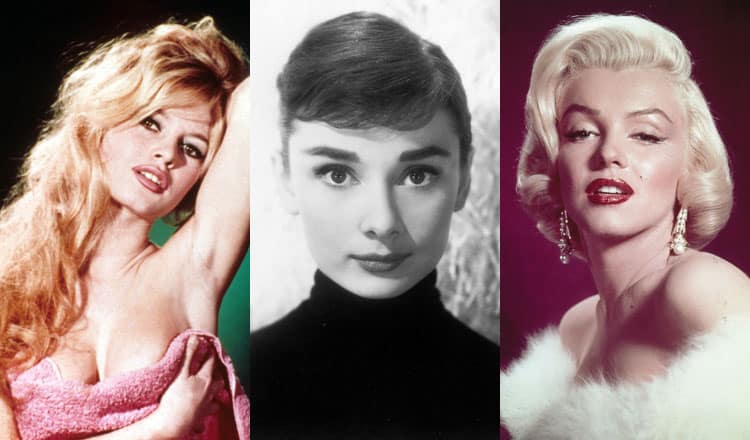What is Haute Couture?
Costume and Fashion history would not be the same without Haute couture.
Haute Couture is a French phrase for high fashion. Couture means dressmaking, sewing, or needlework and haute means elegant or high, so the two combined imply excellent artistry with the fashioning of garments. The purchase of a haute couture model garment is at the top level of hand customised fashion design and clothing construction made by a couture design house.
A model haute couture garment is made specifically for the wearer's measurements and body stance. The made to measure exclusive clothes are virtually made by hand, carefully interlined, stay taped and fitted to perfection for each client.
High Fashion - High Cost of Haute Couture
Depending on the Haute Couture design house and the garment, the cost of a couture item runs from about £10,000 for a simple blouse to £40,000 and often beyond that figure. A Chanel couture suit for example in 2002 might have cost £20,000. By mid-2004 an evening frock cost £50,000.
If you are not rich it's hard for an individual to understand why the price is so high, but it's for service, workmanship, originality of a unique design and superb materials of the finest quality.
In addition, the client would get a perfection of fit only achieved by painstaking methods of cutting and fitting to the client's body. The manual labour needed to produce a garment this way takes between 100-150 hours for a suit and up to 1000 hours for an embellished evening dress.
The evening dress might have thousands of hand-sewn beads probably done by the expert and famous Parisian embroidery and beading firm of Lesage, founded in 1922 by Albert Lesage.
A couture house like Chanel for example will have about 150 regular clients who buy couture and a house like Dior will make about 20 couture bridal gowns a year.
Exclusive Expensive Haute Couture Fabrics
The fabrics available to the couture house would be very luxurious and include the latest novelty fabrics and expensive silks, fine wools, cashmere, cotton, linens, leather, suede, and other skins or furs. In the case of a famous design house, the design and color of a cloth may be exclusively reserved for that couture house.
Outside specialists make accessories either by design or inspiration. Hats, trimmings, buttons, belts, costume jewelry, shoes and innovative pieces are finely crafted to complement the fabrics and fashion ideas being created. Superb craftsmanship, a fresh idea and publicized internationally renowned names all command a price to match. Those able to afford couture are happy to pay for exclusivity and the privacy afforded by the system.
Toiles are Sample Garments
Designers create their initial designs either by using muslin, which drapes well for flowing designs or by using linen canvas or calico for more structured garments such as tailored garments. These sample models are called toiles and save using very expensive fabrics that can cost a £100 or more a metre. The toile can be manipulated, marked, and adjusted to fit a particular live model's measurements until the designer and his sale staff are all satisfied.
The final toile of a design idea is an accurate interpretation of the line or cut right down to the button placement or hemline that the designer is seeking. Once satisfied the designer instructs his staff to make up the garment in the selected and exclusive materials.
One seamstress or tailor will work on the garment from start to finish. The cutting and finishing is done in one room and the workroom manageress is responsible for everything produced in that room.
Haute Couture - Appointments Only Please
When a customer decides to order a Haute Couture garment she needs to first make an appointment with the design house prior to any visit to Paris. Model garments from collections are sometimes out of the country being presented elsewhere. Some couture houses provide a video of the collection to serious purchasers.
The Haute Couture Order
Once given an appointment the client is looked after by a vendeuse, an important saleswoman responsible for customers, their orders and supervision of their fittings.
The vendeuse gets commission on the clothes of her own particular group of clients.
From the moment a client is received at the salon the client is helped and humoured through all stages of fitting and sudden difficulties. A difficulty could for example be another client from the same city who wants the exact same design and colour garment for a prestigious function.
The vendeuse smoothes out such problems knowing full well what a disaster it could be for two women to pay vast sums for an exclusive haute couture item only to bump into the acquaintance at the same venue in the identical outfit.
Every ensemble ordered is made to the requirements of each individual client. After choosing the model she wants, a customer is measured and has to be prepared for 3 fittings, sometimes more.
After a fitting and adjustments noted the garment is laid mis à plat. This means it's laid flat on the table, taken to pieces, adjusted and put together again ready for the next fitting.
The vendeuse holds discussions between stockroom, embroiderers, furriers and client. Her final inspection of a garment and her expectation of the highest standards ensures it's approved as couture and suitable to release to a client. Eventually the garment fits like a glove highlighting the client's good figure points and diminishing bad figure flaws.
Haute Couture Caters for an Exclusive Clientele
Sometimes designers work for their own label and sometimes they work for a famous Haute Couture house. Very few couture model sales are made in a year and these rarely total more than about 1500 sales for each house.
This is not surprising when you learn that only about 3000 women or so worldwide can actually afford to buy clothes at the highest level, and fewer than 300 buy regularly. See Theories Of Fashion
Selling the Haute Couture Dream
Because of this, Haute Couture actually runs at a loss. Design houses present expensive million pound fashion shows of often dubious, but outrageously noticeable designs intermixed with exquisite garments on supermodels. The couture house sells only a very limited percentage of Haute Couture model garments to a contracting number of customers.
The profits from this activity are negligible, amounting to less than ten per cent of gross profits of the couture name or even sometimes a loss.
You might then wonder what the point of it all is for so low a percentage sale in relation to effort and deadlines. The answer lies in the phrase 'selling a dream'. The fashion shows attract huge media attention and gain enormous publicity for the couture houses. They sell a dream of the intangible. A dream of chic cachet, of beauty, desirability and exclusiveness that the ordinary person can buy into.
If a consumer can afford the bottle of perfume, the scarf, the designer boutique jewelry, the bag of the season, the couture named cosmetics or the ready to wear 'designer label' products they convince themselves they are as exclusive as the 1000 women and the supermodels who regularly wear Haute Couture model gowns.
It is fair to say that the goods are usually of very high quality, so many people are happy to pay a price that they feel reflects the image and standard. However if this is all way beyond your means and part of fantasy land why not get one of the many online catalogues that feature clothes for real people. Or try The Body Shop Invent Your Scent here.
Couture Front for Ready to Wear, Beauty and Perfume
Haute Couture is the prestigious front for French creative fashion and original design. This ultimately translates into the lesser priced, but still costly designer label known as Prêt-à- Porter or ready to wear. In turn, the ready to wear and couture house beauty industry employs a huge workforce for the many lower level sales of perfume and accessories.
This makes large profits for the couture design house through the volume of mass market international sales.
Chambre Syndicale Fashion History
Haute Couture has come a long way since the days of Louis XIV who promoted French fashion through Fashion Dolls.
The fashion history of Haute Couture truly began in France in the 18th century with couturier Rose Bertin as Minister For Fashion and continued with Leroy after Napoleon became Emperor in 1804.
In those early days famous ladies and royal personages told the couturiers what they wanted in dress designs.
Later in the 19th century Englishman Charles Worth regarded now as the father of modern Haute Couture first put his name on the label of clothes. In 1858 in Paris he began to produce collections of clothes from his own ideas for clients to see and approve or disapprove of.
Worth's approach was considered novel. His ideas of showing finished couture garments on live models were a huge success with Empress Eugenie and so designers began to dictate what might be fashionable.
Worth Founds the First Chambre Syndicale in 1868
Ten years later Charles Worth shown in the header above and his sons founded an association of couture houses called The Chambre Syndicale De La Confection Et De La Couture Pour Dames Et Fillettes. Its initial purpose was intended to stop couture designs being copied.
The Chambre Syndicale De La Haute Couture 20th Century
In fashion history terms the organization has progressed and changed its name with the times in an effort to promote French fashion and the French Haute Couture style.
The Chambre Syndicale De La Haute Couture is one of several Chambres Syndicales that make up the Fédération Française De La Couture Du Prêt-à-Porter established in 1973. It is known also more simply as the Chambre Syndicale De La Couture.
The Decline of Couture Houses
Over the 20th century the number of couture design houses contracted to just 18 by 2000. In 1946 there were 106 fashion houses and even in 1952 there were still sixty salons.
By 1997 only 18 salons were in a position to produce full public fashion collections twice yearly. Sadly, by January 2002, at the time of Yves St. Laurent's announcement of his retirement, there were only 12 couture houses left. In 2003 Donatella Versace stopped doing the couture shows and by 2004 so did Ungaro.
So by 2004, only 9 formed the high-ranking couture houses of Chanel, Dior, Givenchy, Gaultier, Lacroix, Mori, Sirop, Scherrer, and Torrente. Valentino not situated in France is a correspondent second-ranking member. Then there are junior couturiers who make a lesser third group and who are considered guest members not part of the higher ranks until elected in by the rest.
Recently in late January 2005, 70-year-old fellow Italian Giorgio Armani, decided to show in Paris making a statement showcase of his 'not ready to retire yet' decision. Even fewer houses are showed at Paris fashion week Jan 2005. This situation is in such flux, that it is impossible to keep an accurate record of the industry.
What is the Chambre Syndicale De La Couture?
Chambre Syndicale De La Couture is the regulating commission that determines which fashion design houses are eligible to be true haute couture houses. Within the Fédération the Syndicale is a body that promotes, educates, represents, defends, deals with social and working benefits, and advises its members in all relations between labor and management, including great names of the Paris couture world.
The Syndicale also deals with piracy of styles, foreign relations and organization and coordination of the fashion collection timetables. They also institute some collective international advertising for the French fashion industry.
Chambre Syndicale De La Couture Paris School
Finally the Chambre Syndicale runs a Paris couture school to train hopeful designers and technicians of the couture trade. Fashion courses marry old techniques with new and include use of Computer Aided Design (CAD) using Lectra systems as well as fashion design, apprenticeship, finishing courses and couture. Famous designers talk to the students and allow them to see fashion showings. It's a great source of skilled labour and fresh talent for the dwindling couture houses.
Strict Rules to Become a Couture House
According to Chambre Syndicale De La Couture rules, to classify as a couture house a couturier must produce 50 new and original designs of day and evening wear for each collection. They must show 2 collections a year. They must employ a minimum of at least twenty full-time technical people in at least one atelier or workshop.
Because of the strict regulations by the Chambre only a few design houses can use the exclusive Haute Couture label. The current number of couture classification houses are entitled to free advertising on state run French television.
Private buyers form only a fraction of the sales of a couture house. Manufacturers attend collections to buy models, toile patterns or to seek inspiration.
Bi-annually in January and July buyers and world press flock to Paris for the spring/summer and fall/winter Haute Couture and Ready To Wear/Prêt-à-Porter collections. The Fédération Française oversees the smooth running of organizing the buyers and press with the Chambre Syndicale.
Inspiration for Buyers at a Price
Couture houses charge an entrance fee to wholesale and retail firms who book to see the collections. The fee is scaled according to individual firms. Some firms go only to get an idea of the 'line'.
They have bought the right to inspiration. They might buy a complete model gown as shown in the collection or they buy a toile in linen with the details sketched in with a sketch of the pattern, original sample fabric and trims.
Once the model has been bought in any of these ways the buyer has the right to reproduce it and to mention the name of the house from which it originated. In the UK the firm Wallis have done this and over the years they have produced innovative original stylish clothes.
Branding
Branding is so important to a couture house that counterfeiting is international. The success of a brand can be measured in terms of how much is illegally produced.
Brand names like Chanel, Armani, Gucci and Prada and Versace have all suffered lost profit from counterfeit perfume and T-shirts or other contraband goods all bearing their name or an almost identical logo look alike.
Licensing
Designers also license their name so that it can be applied to all sorts of items from belts, spectacle frames, sunglasses, pens, underwear, crockery, and wallpaper to bed linen. In the early days of branding some designers like Pierre Cardin let their name be overused. In his case he granted over 800 licenses that allowed the intertwined PC logo symbol worldwide use.
The brand lost some of its cachet, but Cardin regained much personality by producing small limited collections and only showing them to private clients.
What is a Haute Couture Eesthetic?
Haute couture refers to high-end, custom-made clothing that is created by prestigious fashion houses and designers. A haute couture aesthetic, therefore, refers to the specific style and aesthetic that is associated with these types of garments.
This typically includes intricate and detailed designs, the use of high-quality materials, and an emphasis on luxury and exclusivity. Haute couture garments are often created for special occasions and events, such as red carpet events or high-profile weddings, and are considered to be some of the most elite and coveted pieces of clothing in the fashion industry.
Will Haute Couture Survive the 21st Century?
Exclusivity means enhanced value to the status-conscious consumer, whilst overuse of a brand devalues it, making it worthless.
In a world of relaxed dressing and passé dress codes, today's couture lacks viability for even the minority that might afford it. Those who can and still choose to, are an aging clientele. The young rich prefer to wear jeans and tops from an up-and-coming 'young' designer with a finger on the buzzer. Even more significant is the fact that many don't have the posture or desire to wear corseted clothes.
New ways of making money have had to be formulated. The huge cash flow required to create a 40-minute runway show that may or may not be a success, means that fashion houses cannot rely on Haute Couture for their main income.
To make profits, couture houses have a real need for the diversion of branding to produce ready-to-wear and fashion goods with more realistic price tags for the majority, rather than exclusive pricing for a minority.
Haute Couture is likely to stay merely as a marketing tool since it's the enhanced cachet of brand association with it, that really does capture the public's imagination and which will help the remaining few couture houses to survive in the 21st century.


